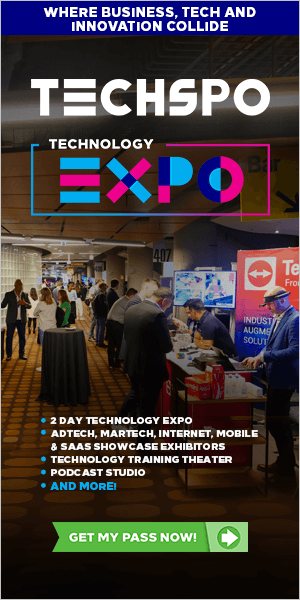Who needs a humanoid robot when everything is already robotic?
Humanoid robots from Tesla can “be a teacher, babysit your kids…, walk your dog, mow your lawn, get the groceries, just be your friend, serve drinks. Whatever you can think of, it will do,” said Elon Musk at this month’s Tesla “We, Robot” showcase in Burbank, CA.
To paraphrase: “Humanoid robots can be human, so you don’t have to!”
It’s a toxic and misguided vision for humanity — let me tell you why.
What is a robot, anyway?
When the public thinks of a robot, they think of a humanoid robot — an intelligent machine with feet, legs, knees, arms, a neck, a head, and a face — thanks to countless movies, TV shows, novels, and comics.
But what is a robot, really?
A robot is any computerized machine with sensors that gather information from its environment and can perform actions in the physical world based on that input. Robots’ attributes include autonomy, programmability, sensing capability, decision-making, and the ability to perform physical actions.
We talk about robots as a kind of future technology. But we’re surrounded by them every day.
The world of robots is big (so bear with me here); it includes consumer camera drones, smart thermostats, automated garage door openers, self-checkout kiosks, modern washing machines and dryers, robotic lawnmowers, automated pool cleaners, smart refrigerators, advanced coffee makers, automated pet feeders, and smart lighting systems.
There are robot vacuum cleaners, automated window blinds, automated dishwashers, smart ovens, self-service airport check-in kiosks, ATMs, advanced vending machines, adaptive traffic light systems, automated parking garage systems, modern HVAC systems, self-service library checkout systems, smart doorbells, advanced prosthetic limbs, automated subway or train systems, self-service bike rental kiosks, automated car washes, smart toilets, automated pill dispensers, modern pacemakers and implantable cardioverter-defibrillators, automated milking machines, self-balancing electric scooters, automated baggage handling systems, smart power grids, automated trading algorithms, and even modern hearing aids.
Our food is produced with the help of autonomous robot tractors, planting and seeding robots, weeding and pest control robots, automated greenhouse systems, harvesting robots, agricultural drones, soil analysis robots, cow-milking robots, palletizing robots, autonomous tractors, robotic sprayers, and inspection robots.
When you order a pack of batteries from Amazon.com, that order is facilitated by inventory management robots, mobile drive units for transporting goods, sorting robots, AI-driven robotic arms for item manipulation and package transfer, among others.
We are already totally reliant on robots for automotive manufacturing, electronics production, metal and machinery fabrication, plastics and chemical processing, construction, pharmaceutical manufacturing, healthcare, retail and hospitality, smart cities development, transportation, last-mile delivery, e-commerce, inspection and surveillance, and semiconductor production.
The belief that robots are always, usually, or even often humanoid is false. And the belief robots are coming in the future — well, as I just illustrated — is false, too.
We already live in an economy and society that is totally dependent upon thousands of different kinds of robots. They’re all around us, even if we don’t recognize them.
The future of robots
Meanwhile, two things are simultaneously happening. Existing jobs done by robots are constantly becoming ever more sophisticated, precise, efficient, and inexpensive.
Second, millions of tasks not previously performed by robots are being turned over to them and to robotic machinery. A diverse array of robotic devices will surely become commonplace over the next two decades.
The service sector will see a surge in delivery robots, streamlining last-mile package and food delivery logistics. Advanced cleaning robots will maintain both homes and commercial spaces.
Surgical robots performing minimally invasive procedures with high precision will benefit healthcare. Rehabilitation robots and exoskeletons will transform physical therapy and mobility, while robotic prosthetics will offer enhanced functionality to those who need them. At the microscopic level, nanorobots will revolutionize drug delivery and medical procedures.
Agriculture will increasingly embrace harvesting and planting robots to automate crop management, with specialized versions for tasks like weeding and dairy farming. Autonomous vehicles and drone delivery systems will transform the transportation sector, while robotic parking solutions will optimize urban spaces.
Military and defense applications will include reconnaissance drones, bomb disposal robots, and autonomous combat vehicles. Space exploration will continue to rely on advanced rovers, satellite-servicing robots, and assistants for astronauts on space stations.
Underwater exploration robots and devices monitoring air and water quality will benefit environmental and oceanic research. Specialized robots designed for search and rescue operations will aid disaster response efforts.
Emerging categories like soft robots, made from flexible materials, and swarm robots working collaboratively, will open new possibilities. AI-enhanced robots with advanced decision-making capabilities will become increasingly autonomous and adaptable.
In short, according to Nvidia CEO Jensen Huang (during a March 17 speech), “Everything is going to be robotic.”
When everything is robotic, what would humanoid robots do?
Musk’s prediction that humanoid robots will be teachers, babysitters, dog walkers, lawn mowers, grocery shoppers, bartenders, and friends showcases a toxic and misguided vision.
It’s misguided because nearly everything will already be robotic by the time Musk’s robots are capable of autonomous action. (To be clear, Tesla Optimus robots are nowhere near as advanced as Musk tried to make everyone believe at Tesla’s recent “We, Robot” event.
Consider, as one isolated example, the “robots will mow your lawn” claim. Musk imagines a bipedal humanoid robot in the front yard pushing a mower, an obviously ridiculous scenario.
Robotic mowers are already a banality. These appliances — sort of like Roomba vacuum cleaners, but for cutting grass instead of vacuuming floors — last for years and quietly and autonomously barber turf all day, avoiding flower beds and sidewalks without fail.
Current global sales exceed 1.5 million robotic mowers per year, at an average price of $1,200 — the same price as the cheapest Apple iPhone 16 Pro Max. Within five years, annual robotic lawn mower unit shipments are expected to reach seven million per year. Anyone with a little money and a distaste for mowing a lawn can buy one. There is no unmet need here for $50,000 humanoid robots.
This is also true for all the other jobs specified and unspecified by the Musks of the world. Robotic devices are already doing that work. So what’s left for humanoid robots to do?
The vision is toxic because, once you eliminate the tasks and jobs specialist robots will already be doing, what remains is the replacement of human connection. This very social and familial interaction is what makes us human.
Let’s start with dog walking. We get a dog so that we can enjoy the incredible connection that’s possible between a person and a dog. We feed a dog, pet a dog, hang out with a dog, and, yes, walk a dog because the experience of caring for a dog is clearly gratifying and meaningful for both species. Outsourcing our relationship with our dogs to an AI machine is (to be blunt) cold and horrible. We care for a dog for the bond and the relationship. We walk a dog in the morning for the ritual, for the exercise, and, above all, for the happiness that fulfilling the dog’s need to explore (and defecate) brings us.
Elderly companionship? Personal friendship? Education? Childcare? Why does anyone assume that a walking toaster fulfills the essential human need for empathy, connection, and care? People need to look into the sentient and conscious eyes of another human being. It’s literally the first and most basic human need.
Everything about the humanoid-robot-as-a-friend idea gives me the creeps.
The founder of the AI lab Midjourney, David Holz, posted on X in January that “we should be expecting a billion humanoid robots on earth in the 2040s and a hundred billion (mostly alien) robots throughout the solar system in the 2060s,” and Musk agreed with this post.
Such visionaries have what, to me, is clearly the wrong vision, and a disturbing one. We shouldn’t want AI robots to replace people in our lives and trick us into believing they’re human.
We should want non-humanoid robotic devices to do repetitive, dangerous, boring, and menial work so we can spend more time doing creative, fulfilling work and also spend more time with our parents, kids, and, yes, our pets.
Let the machines do the work. Let’s reserve our humanity for people and pets.
Source:: Computer World








No comments